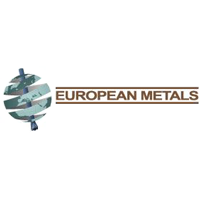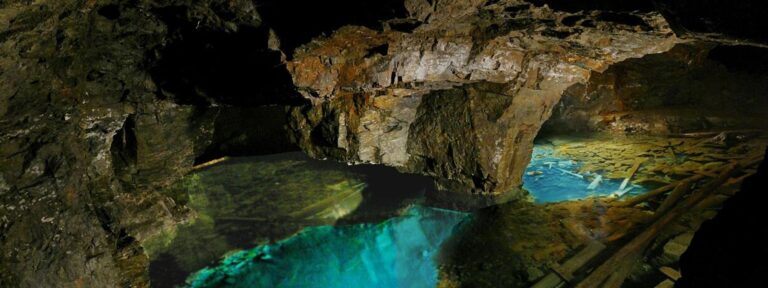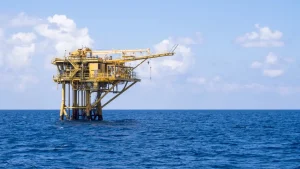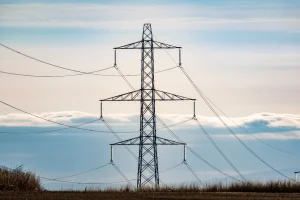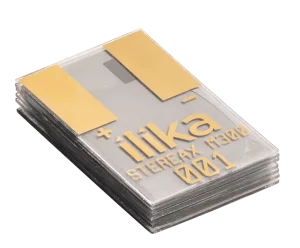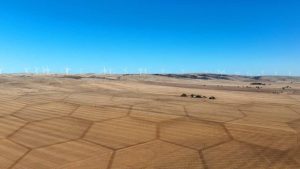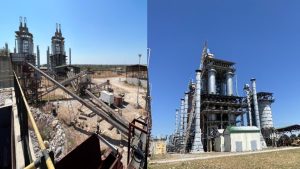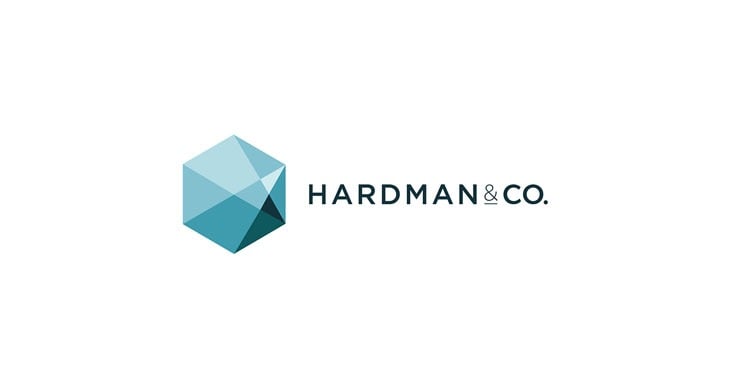European Metals Holdings Ltd (ASX LON:EMH) have today announced analytical results for the final three drillholes completed under the recently completed drilling programme at the Cinovec Main sector of the deposit.
A revision of the resource model is now underway and will form the basis of the soon to be completed Preliminary Feasibility Study. It is anticipated this resource model will be finalised and announced in February 2017.
Key Points:
· Analytical results for further three drillholes at Cinovec Main confirmed or exceeded the expected lithium content and mineralisation widt
· The drillholes CIW-25, CIW-27 and CIW-06 are located in a central part of the deposit, filling a gap between the western edge of the Cinovec deposit and the historic vein deposit Cinovec-Central.
· Hole CIW-25 contains the Company’s longest Li intercept to date of 361.5m averaging 0.43% Li2O, incl. a high grade Li interval of 14.7m averaging 0.93% Li2O. Moreover, significant intervals of Sn and W are included: 2m @ 1.67%Sn and 0.216% W and 2m @ 0.76%Sn and 0.319% W.
· Hole CIW-27 retuned a Li intercept of 235m averaging 0.49% Li2O, incl. high grade zones of 14m @ 0.97% Li2O and 2m @ 1.79%Li2O.
· Hole CIW-06 intercepted a Li interval of 258.5m averaging 0.44% Li2O, containing high grade intercepts of 3m@1.11%Li2O, 2.75m@0.91%Li2O and 2m@1.03%Li2O.
· The updated drill database and geologic model for Cinovec has been completed and provided to Widenbar and Associates. The block model will be updated within the next fortnight, as all the analyses of core from the drilling programme have been received. The block model and resource calculation will form the basis of the Preliminary Feasibility Study.
European Metals Holdings Ltd CEO Keith Coughlan said: “I am very pleased to report results from the last three drillholes from the 2016 drilling programme at Cinovec Main. These results continue to either confirm or exceed our expectations with regards to lithium content and mineralisation width. The sheer size of Cinovec is highlighted by the 361m intercept which is in a league of its own in the lithium space. I am also pleased to report that we have completed the geologic model to a high degree of accuracy and that we have commissioned Widenbar and Associates to upgrade the resource estimate for the PFS study. I am looking forward to receiving and reporting these results in the near future.”
Drill Programme
The drill holes CIW-25, CIW-27 and CIW-06 were collared in the central part of Cinovec main, filling a gap between the historic Cinovec-Central mine and the western edge of the Cinovec deposit (see Figure 1).
The current drill programme at Cinovec Main has been planned to confirm and delineate near surface lithium and tin mineralisation that would provide initial feed to the mill. Other goals are the conversion of resources from the Inferred to Indicated category, and delivery of material for metallurgical testing. A total of 17 diamond core holes have been completed. Visual inspection and logging indicates that the geology in these holes is as expected. Drill details are listed in Table 1 below.
After geological logging, drill core is cut in half with a diamond saw. Quarter core samples are selected (honouring geological boundaries) and dispatched to ALS (Romania) for preparation and assay; the 3/4 of the core is returned to the core box and stored securely on site. Samples are being prepared and analysed by ALS using ICP and XRF techniques following standard industry practice for lithium and tin deposits. Strict QAQC protocols are observed, including the insertion of a Li standard in random fashion for every 10 core samples, as well as the insertion of blank and duplicate samples.
| Table 1 – Completed drillholes, Cinovec Main | |||||||
| Hole ID | North | East | Elevation (m) | Depth (m) | Azimuth | Dip | Comments |
| CIW-11 | -779300 | -966098 | 867.4 | 444.4 | 40.1 | -77.86 | confirmation/infill |
| CIW-20 | -778811 | -965638 | 837.5 | 257.6 | 336.7 | -84.6 | confirmation/infill |
| CIW-13 | -779176 | -966127 | 862.8 | 429.3 | 76 | -80.4 | confirmation/infill |
| CIW-19 | -778811 | -965692 | 837.8 | 271.6 | 332.1 | -89.58 | confirmation/infill |
| CIW-08 | -778791 | -965800 | 837.6 | 274.9 | 156.85 | -89.3 | confirmation/infill |
| CIW-18 | -779019 | -966183 | 855.47 | 395.7 | 210.6 | -89.05 | confirmation/infill |
| CIW-14 | -779056 | -966093 | 854.46 | 417.8 | 323.3 | -89.07 | confirmation/infill |
| CIW-07 | -778867 | -965841 | 840.99 | 300 | 333.6 | -89.57 | confirmation/infill |
| CIW-26 | -779215 | -965937 | 865.33 | 430.5 | 248 | -89.38 | confirmation/infill |
| CIW-17 | -778957 | -965521 | 847.07 | 238.2 | 332.1 | -89.58 | confirmation/infill |
| CIW-21 | -778812 | -965952 | 841.33 | 320.6 | 42.68 | -89.02 | confirmation/infill |
| CIW-10 | -779215 | -965938 | 865.35 | 455 | 303.4 | -74.47 | confirmation/infill |
| CIW-23 | -779009 | -965994 | 848.91 | 376.1 | 222.3 | -89.4 | confirmation/infill |
| CIW-22 | -779009 | -965993 | 848.88 | 420.6 | 287.9 | -70.43 | confirmation/infill |
| CIW-06 | -778995 | -965845 | 846.77 | 296.3 | 11.7 | -80.18 | confirmation/infill |
| CIW-25 | -778994 | -965902 | 847.04 | 382.4 | 281.1 | -69.89 | confirmation/infill |
| CIW-27 | -779152 | -965817 | 861.5 | 370 | 271.9 | -89.53 | confirmation/infill |
| Hole locations are recorded in the local S-JTSK Krovak grid, all coordinates are surveyed. | |||||||
Mineralised Intercepts and Lithology
The drillholes CIW-25 and CIW-06 were located on the NW edge of the Cinovec-main deposit, both were collared in the lithium bearing granite, and are about 60 meters apart in N-S direction at surface, increasing with depth as their core angles are discordant.
The upper part of the drill hole CIW-25 is formed by albite granite with several quartz veins and thin near-vein greisen bodies. The initial interval of massive greisen starts at depth of 104.25m and hosts a high grade intercept of 14.7m averaging 0.93% Li2O and high Sn and W intercepts (incl. 2m@1.67% Sn). The interval of intensive gresenization is terminated by an albite (± sericite) granite (173.5-204.6m). Below this zone, a long interval of greisenized granite and greisen was intersected. The base of the lithium mineralisation, the so called is low-mica granite, is at a depth of 373m. Apparent core angles of narrow greisen contact were measured at 55-70 degrees. The drillhole was angled 70 degree West and the core was not oriented; therefore, the mineralised intercepts may not represent true widths.
The hole CIW-06 is angled 80 degrees to the North. It starts in albite granite and is intersected by several quartz veins with high Sn and W grades. Greisen and greisenized granite zones are more frequent with depth. This upper sequence of the core is interpreted as a continuation of the vein domain from the historic Cinovec-Main deposit (4 historic stopes were intercepted in the hole). Interval of massive greisenization starts in depth 127.5m. The base of the Li mineralisation is presented by low-mica granite at a depth of 270m. As the angle of the hole is perpendicular to quartz veins and greisen bodies, the mineralised intercepts in the hole CIW-06 can be considered of true, or near true, widths.
Drill hole CIW-27, located some 160m W of CIW-06, is collared in the barren porphyry. The contact with the lithium bearing granite is at 102.8m. Immediately below the contact a massive greisen with quartz veins was intersected. The main mineralised interval is formed by greisenized granite and greisen, locally with quartz veins and zones of albite (± sericite, hematite) granite. The base of the main mineralised interval occurs at 339m where the low-mica granite is intersected. Measured core angles in the drillhole CIW-27 are subhorizontal, the hole is vertical, therefore the mineralised intercepts can be considered of true, or near true, widths.
The Tables below list the mineralised intercepts for the three drillholes.
| Table summarizing mineralised intercepts in CIW-25 | ||||||
| CIW-25 | ||||||
| From | To | Interval (m) | Li2O (%) | Sn (%) | W (%) | Note |
| 9.5 | 373 | 361.5 *) | 0.43 | incl. 14.7m@0.93%Li2O (106.3-121m), | ||
| 1.55m@1.23%Li2O (123.45-125m), | ||||||
| 3m@0.89%Li2O (127-130m), | ||||||
| 4m@0.89%Li2O (159-163m), | ||||||
| 5m@0.95%Li2O (166-171m), | ||||||
| 2m@0.98%Li2O (223-225m), | ||||||
| 6m@0.81%Li2O (260-266m) | ||||||
| 23 | 25 | 2 | 0.23 | 0.01 | 0.055 | |
| 75.6 | 77 | 1.4 | 0.28 | 0.22 | 0.215 | |
| 104.3 | 106.3 | 2 | 0.67 | 1.67 | 0.216 | 179ppm Nb |
| 110.3 | 111.3 | 1 | 0.96 | 0.05 | 0.064 | |
| 111.3 | 112.3 | 1 | 0.84 | 0.13 | 0.007 | |
| 115.3 | 116.3 | 1 | 0.92 | 0.08 | 0.072 | |
| 118.55 | 121.2 | 2.65 | 0.95 | 0.19 | 0.06 | |
| 128 | 129 | 1 | 0.96 | 0.32 | 0.055 | |
| 156 | 157 | 1 | 1.14 | 0.07 | 0.428 | |
| 213 | 215 | 2 | 0.45 | 0.76 | 0.319 | 305ppm Nb, 100ppm Ta |
| 222 | 223 | 1 | 0.68 | 0.25 | 0.003 | |
| Cut-off: 0.2%Li2O, 0.1%Sn, 0.05%W | ||||||
| *) intercept shorter by mined-out cavities | ||||||
| Table summarizing mineralised intercepts in CIW-27 | ||||||
| CIW-27 | ||||||
| From | To | Interval (m) | Li2O (%) | Sn (%) | W (%) | Note |
| 104 | 339 | 235 | 0.49 | incl. 14m@0.97%Li2O (106-120m), | ||
| 2m@1.79%Li2O (112-114m), | ||||||
| 3m@0.90%Li2O (127-130m), | ||||||
| 4m@0.86%Li2O (140-144m), | ||||||
| 1m@1.03%Li2O (162-163m), | ||||||
| 1m@1.14%Li2O (192-193m) | ||||||
| 102.8 | 104 | 1.2 | 0.12 | 0.24 | 0.27 | |
| 111 | 112 | 1 | 0.96 | 0.02 | 0.093 | |
| 121 | 122 | 1 | 0.71 | 0.1 | 0.021 | |
| 153 | 154 | 1 | 0.33 | 0.17 | 0.013 | |
| 221 | 222 | 1 | 0.31 | 0.1 | 0.042 | |
| 224 | 225 | 1 | 0.26 | 0.02 | 0.399 | |
| Cut-off: 0.2%Li2O, 0.1%Sn, 0.05%W | ||||||
| Table summarizing mineralised intercepts in CIW-06 | ||||||
| CIW-06 | ||||||
| From | To | Interval (m) | Li2O (%) | Sn (%) | W (%) | Note |
| 8 | 270 | 258.5 *) | 0.44 | incl. 1.8m@1.00%Li2O (75-76.8m), | ||
| 2.75m@0.91%Li2O (87.15-89.9m), | ||||||
| 1.85m@1.00%Li2O (104-105.85m), | ||||||
| 3m@1.11%Li2O (128-131m), | ||||||
| 2m@1.02%Li2O (186-188m), | ||||||
| 2m@1.03%Li2O (247-249m) | ||||||
| 37.8 | 38.2 | 0.4 | 0.09 | 1.53 | 0.061 | |
| 49 | 50.85 | 1.85 | 0.21 | 0.02 | 0.257 | |
| 73.4 | 81.7 | 8.3 | 0.68 | 0.14 | 0.175 | |
| 88.2 | 89.9 | 1.7 | 0.92 | 0.11 | 0.007 | |
| 102 | 103 | 1 | 0.47 | 0.03 | 0.151 | |
| 107 | 108 | 1 | 0.67 | 0.05 | 0.118 | |
| 116 | 117 | 1 | 0.48 | 0.03 | 0.059 | |
| 130 | 131 | 1 | 1.12 | 0.21 | 0.005 | |
| 141 | 142 | 1 | 0.41 | 0.04 | 0.055 | |
| 151 | 153 | 2 | 0.71 | 0.21 | 0.007 | |
| 283 | 287 | 4 | 0.23 | |||
| Cut-off: 0.2%Li2O, 0.1%Sn, 0.05%W | ||||||
| *) intercept shorter by mined-out cavities | ||||||
(Please refer to the announcement on the European Metals Holdings Ltd Website for the graphic Figure 1 – A geological map showing the Company’s drill holes against surface geology and subsurface greisen bodies projected to surface (in green). Historic UG workings and drill holes not shown – www.europeanmet.com.)
Geological Model
The 3D geological model has been updated in-house using Leapfrog Geo software (Aranz Geo Ltd.). The model is based on the database that includes collars, surveys, lithologic codes and assays from historic exploration and updated EMH drilling information amounting to 94,666m of drilling and 21.5km of underground workings
Additionally, 42 historic sections, 3 level plans and large amount of detail geological maps (scale 1:200, 1:500, 1:2,000) from historic reports were used as source of structural and lithological information.
The model was restricted by the international border with Germany. Topographical surface was created from a contour shapefile with a 5m resolution, procured from the official Geoportal of the Czech Office for Surveying, Mapping and Cadastre. The base of the model was arbitrary set at the level 0 m a.s.l., which is about 50m below the deepest EMH drill hole.
BACKGROUND INFORMATION ON CINOVEC
PROJECT OVERVIEW
Cinovec Lithium/Tin Project
European Metals owns 100% of the Cinovec lithium-tin deposit in the Czech Republic. Cinovec is an historic mine incorporating a significant undeveloped lithium-tin resource with by-product potential including tungsten, rubidium, scandium, niobium and tantalum and potash. Cinovec hosts a globally significant hard rock lithium deposit with a total Indicated Mineral Resource of 232.8 Mt @ 0.45% Li2O and a total Mineral Resource of 606.8 Mt @ 0.43% Li2O containing a combined 6.46 million tonnes Lithium Carbonate Equivalent.
This makes Cinovec the largest lithium deposit in Europe and the fourth largest non-brine deposit in the world.
Within this resource lies one of the largest undeveloped tin deposits in the world, with total Indicated Mineral Resource of 28.6 Mt @ 0.23% Sn and a total Mineral Resource of 70.5 Mt grading 0.20% Sn for a combined total of 141.2 kt of contained tin. The Mineral Resource Estimates have been previously released on 23 November 2016. The deposit has previously had over 400,000 tonnes of ore mined as a trial sub-level open stope underground mining operation.
A Scoping Study conducted by specialist independent consultants indicates the deposit could be amenable to bulk underground mining. Metallurgical test work has produced both battery grade lithium carbonate and high-grade tin concentrate at excellent recoveries with the Scoping Study. Cinovec is centrally located for European end-users and is well serviced by infrastructure, with a sealed road adjacent to the deposit, rail lines located 5 km north and 8 km south of the deposit and an active 22 kV transmission line running to the historic mine. As the deposit lies in an active mining region, it has strong community support.


